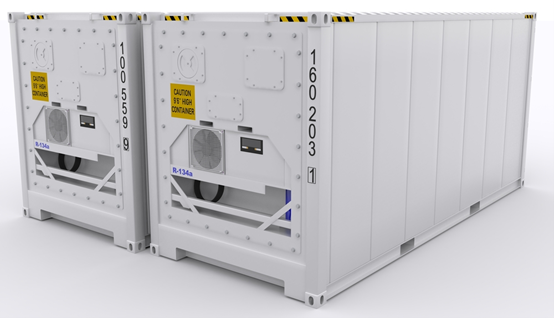-
Shipping Containers
- Container Parts
- Roof Panel
- Side Panel
- Front End Panel
- Door Panel
- Front Corner Post
- Rear Corner Post (Outer/Inner)
- Cross Member
- Bottom Side Rail
- Top Side Rail
- Door Sill
- Front Bottom Rail
- Top End Rail
- Door Header Upper/Lower
- Door Rail
- Floor Spacer
- Angle
- Top/Bottom End Rail
- Door Edge Member
- Door Sealing
- Door Frame Profile
- Door Lining
- Door Hardwares
- Door Gasket
- Side Panel/Lining
- T-Floor
- Roof Panel/Lining
- Cross Member
- Bottom Side Rail
- Top Side Rail
- Ledge PVC
- Kazoo Drain
- Auto Drain
- Alu Tube
- Auto Drain Center Part
- PVC Drain Pipe
- PVC Plugs f. Drain with Ring and Steel Wire
- Door Screw
- Door Screw Nut
- Door Screw Rubber
- Tapping Screw
- Stainless Blind Rivet
- Lashing Ring
- CSC Plate
- Welding Wire
- Tapping Screw Bit
- Vehicle Parts
- Ship Supplies
- 00. Provisions
- 11. Welfare Items
- 15. Cloth & Linen Products
- 17. Tableware & Galley Utensils
- 19. Clothing
- 21. Rope & Hawsers
- 23. Rigging Equipment & General Deck Items
- 27. Painting Equipment
- 31. Safety Protective Gear
- 33. Safety Equipment
- 35. Hose & Couplings
- 37. Nautical Equipment
- 39. Medicine
- 45. Petroleum Products
- 47. Stationery
- 49. Hardware
- 51. Brushes & Mats
- 55. Cleaning Material & Chemicals
- 59. Pneumatic & Electrical Tools
- 61. Hand Tools
- 63. Cutting Tools
- 65. Measuring Tools
- 69. Screws & Nuts
- 75. Valves & Cocks
- 77. Bearings
- 79. Electrical Equipment
- 81. Packing & Jointing
- 85. Welding Equipment
- 87. Machinery Equipment
- Vehicles
- Lashing Tools
- Logistic Tools
ContainersReefer Containers: The Solution for Shipping Perishable GoodsJul 07,2023Reefer containers, also known as refrigerated containers, are specialized containers used for shipping perishable goods, such as food, pharmaceuticals, and flowers. These containers are equipped with temperature-controlled environments, making it possible to transport goods that require specific temperatures and to keep them fresh and safe during transit. In this article, we will explore what reefer containers are, their history, and their role in the modern supply chain.

What are Reefer Containers?
Reefer containers, also known as refrigerated containers, are specialized containers used for transporting perishable goods that require temperature control. These containers are designed to maintain a specific temperature range throughout the shipping process, ensuring that the goods remain fresh and in good condition upon arrival at their destination.
Reefer containers are commonly used to transport a wide variety of perishable goods, including fruits, vegetables, dairy products, meat, seafood, pharmaceuticals, and other temperature-sensitive products. They are typically made of steel and have insulated walls and airtight doors to prevent external heat from entering the container and affecting the internal temperature.
One of the key features of reefer containers is their ability to maintain a consistent temperature range, which is critical for preserving the quality and safety of perishable goods during transit. The temperature range can typically be set anywhere between -30°C to +30°C, depending on the type of goods being transported.
Reefer containers can be powered in a few different ways, including via an onboard generator, external power source, or using a power pack. This allows them to maintain a consistent temperature even during long journeys, while in storage, or during loading and unloading operations.
In addition to their temperature control capabilities, reefer containers are also designed to be durable, secure, and easy to handle. They are often equipped with features such as forklift pockets, tie-down points, and locking mechanisms to ensure that the goods are transported safely and securely.
Reefer containers come in a variety of sizes, ranging from small units that can be transported on trucks to large containers that can be transported on ships. They can be rented or purchased depending on the needs of the customer.
Reefer containers are typically 20 or 40 feet in length and are made from durable materials, such as steel or aluminum, making them capable of withstanding the rigors of international shipping.
Overall, reefer containers play a crucial role in the global supply chain, enabling the safe and efficient transportation of perishable goods around the world. Their ability to maintain a specific temperature range ensures that these goods arrive at their destination in the same condition as when they were loaded, allowing businesses to provide their customers with high-quality, fresh products.
History of Reefer Containers
The use of reefer containers can be traced back to the mid-20th century when they were first introduced as a solution for shipping perishable goods by sea. Over time, they have become the standard for shipping perishable goods by sea, with millions of containers in use around the world.
The history of reefer containers dates back to the early 20th century when refrigerated transportation was first introduced. Before the advent of reefer containers, perishable goods were transported using insulated boxcars that were fitted with ice bunkers to keep the goods cold.
In the 1930s, companies began experimenting with the use of refrigeration units on trucks, which allowed for the transportation of perishable goods over longer distances. However, it was not until the 1950s that the first reefer containers were developed for use in the shipping industry.
The first reefer containers were developed by American engineer Keith Tantlinger, who had previously worked on the development of containerization. Tantlinger recognized the need for a specialized container that could maintain a consistent temperature range throughout the shipping process, and he developed the first prototype in 1957.
Tantlinger’s design was based on a standard shipping container, but with added insulation and a refrigeration unit. The container was also equipped with a self-contained power supply, which allowed it to maintain a consistent temperature range even when it was not connected to an external power source.
The first reefer containers were put into commercial use in the early 1960s, and they quickly became popular for the transportation of perishable goods such as meat, seafood, and fruits and vegetables. The use of reefer containers revolutionized the shipping industry, allowing for the safe and efficient transportation of perishable goods over long distances and across international borders.
Over the years, reefer containers have continued to evolve and improve. Today’s reefer containers are equipped with advanced temperature control systems, real-time monitoring and tracking capabilities, and other features that allow for the safe and efficient transportation of perishable goods.
Role in the Modern Supply Chain
Reefer containers play a critical role in the modern supply chain. They are used to transport perishable goods from manufacturers and distributors to retailers, and from retailers to customers. With their temperature-controlled environments, reefer containers make it possible to transport goods that require specific temperatures, ensuring that they remain fresh and safe during transit.
In addition, the standardization of reefer containers makes it easier to handle and transport goods, reducing the risk of damage and improving overall efficiency. The containers are also equipped with security features, such as lockable doors and tamper-evident seals, to ensure that the goods inside are protected during transit.
All containers are, the same dimensions, except for length; this has been standardized by the shipping industry, the trucking industry, the railroad industry, and the department of transportation (DOT). This was done in the mid 70’s so that cargo can travel on land surface roadways, byways, and railways. The metal doors on the shipping containers are also standardized.
CIMC Equilink provides various types of new and used containers, especially our standard containers, 40 feet container price and 20 feet container price are very affordable.If you are looking for shipping containers for sale, please visit us by email(info.equilink@cimc.com)or submit a quick quote.
Quick Quote
Copyright © 2019 CIMC Equilink - Container Parts

 中文
中文















